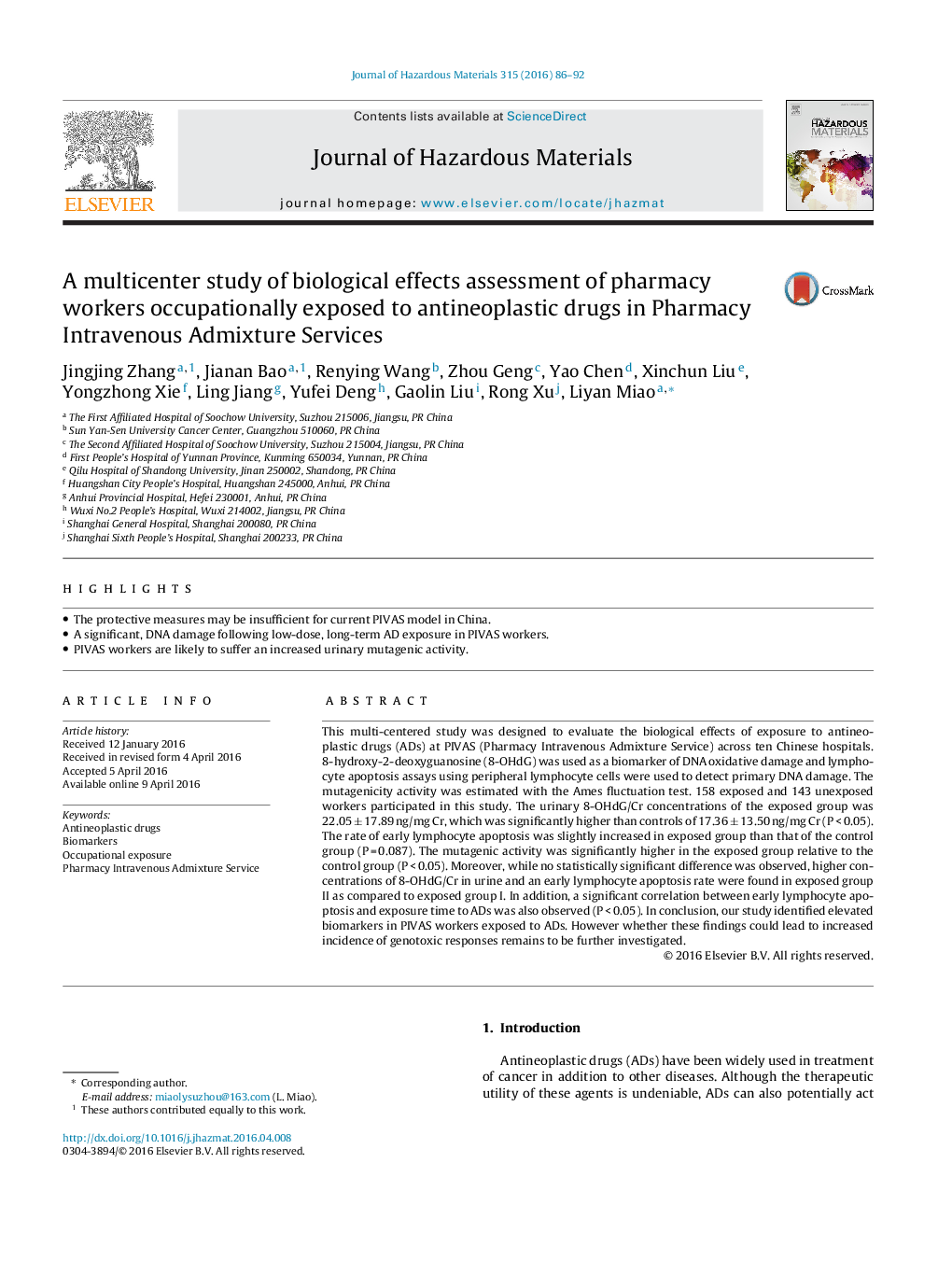| Article ID | Journal | Published Year | Pages | File Type |
|---|---|---|---|---|
| 575233 | Journal of Hazardous Materials | 2016 | 7 Pages |
Abstract
This multi-centered study was designed to evaluate the biological effects of exposure to antineoplastic drugs (ADs) at PIVAS (Pharmacy Intravenous Admixture Service) across ten Chinese hospitals. 8-hydroxy-2-deoxyguanosine (8-OHdG) was used as a biomarker of DNA oxidative damage and lymphocyte apoptosis assays using peripheral lymphocyte cells were used to detect primary DNA damage. The mutagenicity activity was estimated with the Ames fluctuation test. 158 exposed and 143 unexposed workers participated in this study. The urinary 8-OHdG/Cr concentrations of the exposed group was 22.05 ± 17.89 ng/mg Cr, which was significantly higher than controls of 17.36 ± 13.50 ng/mg Cr (P < 0.05). The rate of early lymphocyte apoptosis was slightly increased in exposed group than that of the control group (P = 0.087). The mutagenic activity was significantly higher in the exposed group relative to the control group (P < 0.05). Moreover, while no statistically significant difference was observed, higher concentrations of 8-OHdG/Cr in urine and an early lymphocyte apoptosis rate were found in exposed group II as compared to exposed group I. In addition, a significant correlation between early lymphocyte apoptosis and exposure time to ADs was also observed (P < 0.05). In conclusion, our study identified elevated biomarkers in PIVAS workers exposed to ADs. However whether these findings could lead to increased incidence of genotoxic responses remains to be further investigated.
Related Topics
Physical Sciences and Engineering
Chemical Engineering
Chemical Health and Safety
Authors
Jingjing Zhang, Jianan Bao, Renying Wang, Zhou Geng, Yao Chen, Xinchun Liu, Yongzhong Xie, Ling Jiang, Yufei Deng, Gaolin Liu, Rong Xu, Liyan Miao,
